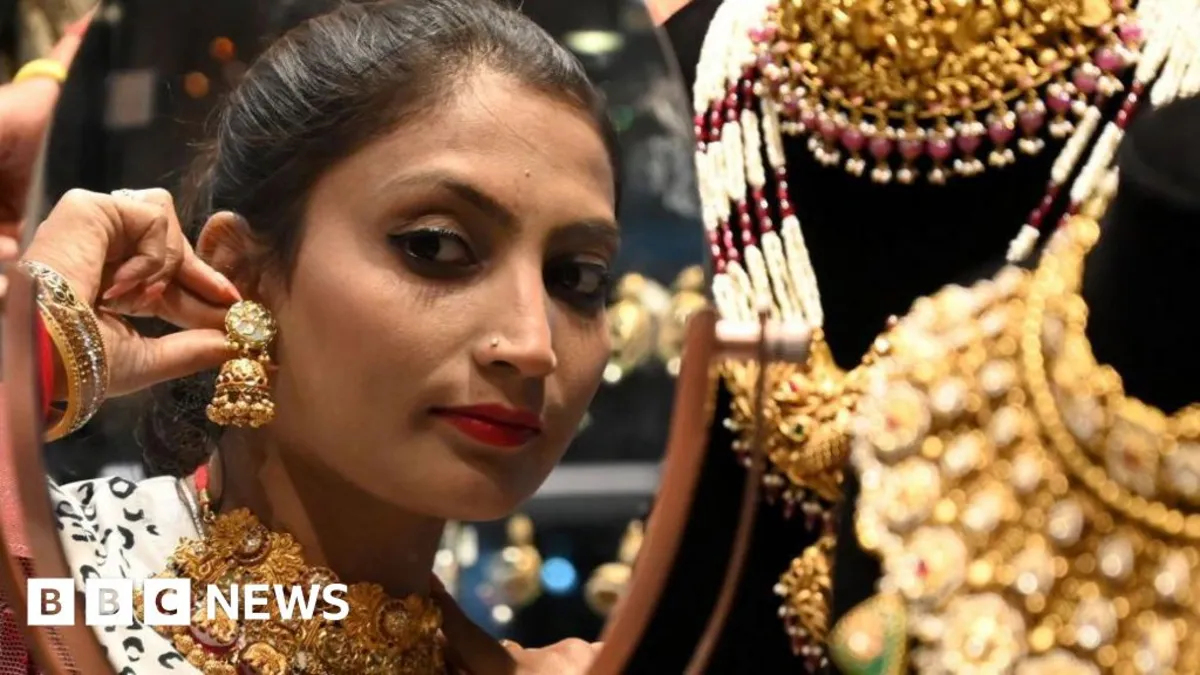
As the Hindu festival of Diwali approaches, the jewellery market in Delhi's bustling Lajpat Nagar neighbourhood is witnessing an influx of shoppers. Despite the challenges posed by soaring gold prices, which have risen to over $1,440 (£1,081) for 10 grams, the allure of gold remains strong among Indians. The streets are lined with cars, and shops are extending their hours, even during holidays, to accommodate the growing number of customers eager to purchase gold and silver jewellery.
Diwali, along with Dhanteras—a smaller yet significant festival occurring this Saturday—is considered an auspicious time to buy precious metals. Thousands of Indians flock to local markets to acquire gold coins, bars, and jewellery, believing these purchases will bring them wealth and good fortune. Prakash Pahlajani, owner of Kumar Jewels, shared insights on the current market dynamics during a busy evening, noting that the fear of missing out (FOMO) due to skyrocketing prices has actually led to an increase in footfall at his store. "People are not saying 'I don't want to buy'. Instead, they are saying, 'I'll buy a little less,'" he explained.
Jewellers are adapting their strategies to meet the evolving demands of customers. Tanishq Gupta, another jeweller in the area, mentioned how he has had to innovate by creating designs that appear elaborate while using less gold. For instance, a coin made of 250mg gold is now thinner yet visually comparable to heavier options, retailing at approximately $35. Additionally, lighter options, such as 25mg gold coins, are becoming increasingly popular among buyers.
Pushpinder Chauhan, a local retailer, highlighted a growing trend: younger customers are increasingly favoring lighter jewellery for everyday wear rather than traditional pieces reserved for special occasions. This shift is accompanied by another noteworthy trend observed by the BBC—more consumers are purchasing gold and silver primarily as an investment rather than as jewellery.
While gold jewellery continues to be the largest segment of India's overall gold demand, the proportion driven by investment, particularly in bars and coins, has seen a significant uptick. According to the World Gold Council (WGC), jewellery's share of the market has decreased from 80% in the second quarter of 2023 to 64% this year, while investment demand has risen from 19% to 35%. This shift underscores a growing interest in exchange-traded funds (ETFs) and digital gold, with September marking record inflows into these investment vehicles.
The influence of India's central bank on gold prices cannot be overlooked. The Reserve Bank of India (RBI) has significantly increased its gold holdings, raising its share in foreign exchange reserves from 9% to 14% by 2025, as reported by the WGC. Kaynat Chainwala, a commodities analyst at Kotak Securities, emphasized the RBI's efforts to diversify its foreign exchange portfolio and reduce reliance on the dollar amid geopolitical uncertainties.
As the festive and wedding seasons unfold, experts anticipate that retail demand for gold and silver will remain resilient despite the record-high prices. However, this surge in demand may not be felt equally across all income levels. Madan Sabnavis, chief economist at the state-run Bank of Baroda, noted that while affluent consumers will continue to make purchases, lower-income families may find themselves priced out of the market.
Bhavna, a bride-to-be preparing for her wedding in February, expressed her concerns about the rising prices. "I am now having to think a lot while buying—about whether to even get something," she remarked outside Mr. Pahlajani's jewellery store. Currently, she has decided to postpone her purchases, hoping that prices will decrease before she resumes her wedding shopping.